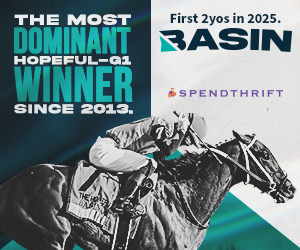
By Chuck Simon
Santa Anita being closed in March is something that few living humans have been around long enough to recall. It’s been 85 years since the current Santa Anita Park opened in 1934. The inaugural Santa Anita Handicap with its then unheard of $100,000 purse was run in February 1935 with great fanfare, race coverage was on the front page of the LA Times. Last week Santa Anita Park found itself back on front pages, horse racing has returned to the spotlight, yet not just in Southern California, but plastered all across phone screens and websites, firmly embedded in the spin zone of the 24/7 news cycle. Death and mayhem sell, and scores of majestic animals perishing violently at a picturesque and famous California racetrack is a ready to serve pieces of click-bait pie. Pointed Op-Ed pieces were penned, mainstream media outlets slammed the sport, some calling for the abolition of horse racing, some just calling for some sort of reform though few if any really have any clue as to what that would actually entail. It’s really both a depressing and sobering time to be a part of a sport that is being attacked, especially with little ammunition to use defending it. Death is simply not justifiable despite its inevitably, the common thread among living creatures is death is going to visit us all.
The horse racing industry of course has responded in its usual discordant manner. While as a sport we are consistent in missing the point, this issue at Santa Anita shows just how vapid blather can be used to drive tired, pointless agendas even in the face of profoundly distressing news. The former White House chief of staff, Rahm Emanuel once famously said,”You never want a serious crisis to go to waste…” and that quote must be the motto of those within the racing community who are pushing for their pet peeve agenda, using dead horses as their unimpeachable justification.
We have heard that the track surface is to blame, that synthetic tracks should have never been removed. We have heard that weather is to blame, most specifically the torrential rainfall that has beseeched Southern California this winter. We have seen blame placed upon the racing officials who have pressed trainers to participate at higher levels. We have heard drugs are the problem, bute which has been around for fifty plus years is suddenly a major cause of injuries. There are those who claim the breed is not strong enough, too much speed they say. Trainers have been maligned for their techniques, training too hard according to some, too light by others. We hear calls for a national commission and standardized regulation though no one ever explains why bigger is better or how California rules in particular would be to blame.
The truth is there is no one solution to prevent horses from breaking their legs. There is no silver bullet that is going to fix this problem, none that will end this issue once and for all. Thoroughbred’s have big bodies, skinny legs and run really fast, they are inherently fragile. That doesn’t mean that the status quo is acceptable. It also doesn’t mean that the considerable amount of work and research that has been done in the area of horse health should be discounted either.
There is probably some practical truth in most of the things that have been blamed for the Santa Anita situation, obviously some far more responsible than others. The breed didn’t just fall apart at one track, in one place, at one time. No lasix isn’t to blame either no matter how it is used as a scapegoat. Things can be and should be done better. Not just because horses died, not just because hundreds of thousands of jobs and an entire industry is at stake, but because it’s the right thing to do. Looking out for our horses is the right thing to do and all of us, we all have to do better job.




